Ken Thomas's KR2S
Ken Thomas's KR2S
revised Oct 21, 1996
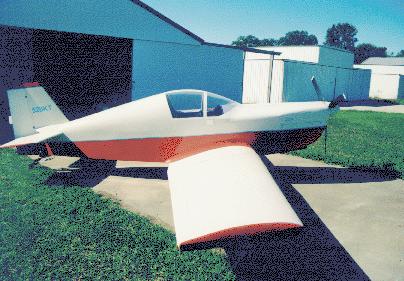
Ken Thomas, of Jasper Alabama, recently completed one of the first KR2S's in the US. Because he is well over 6 feet tall and 250 lbs, Ken moved his firewall two inches forward for more leg room by adding one inch each to both bays forward of the main spar. His fuselage was also stretched 6" wider. The horizontal stabilizer was lengthened two inches on each end, and counterbalanced. Empty weight is 750 lbs. Construction time was 15 months averaging 3 hours per day. He has 11 hours on it to date.
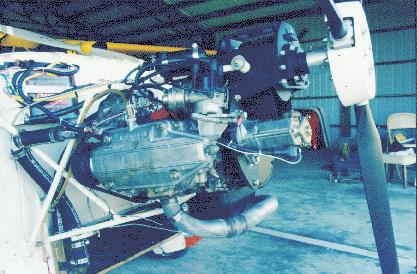
The Subaru EA82 weighs 235 lbs firewall forward, not counting the PSRU or propeller. It is a normally aspirated dual port unit running the stock electronic ignition. Carburetor was a Holley 5200, but is currently being changed to dual 54mm Bing carburetors found on many Rotax's and Sea-Dos. Ken built the engine mount somewhat to plans, but used one size larger diameter tubing, as well as one size thicker wall. The mounting points are also altered to connect to the firewall at a location very close to each of the longerons.
The PSRU was constructed by Dave Johnson at Reductions in Manitoba, Canada, (204) 853-7998. This $1500 reduction unit utilizes a 3.5" belt and a ratio of 1.86:1. The 3 blade Warp Drive prop is 60" in diameter, and features ground adjustable pitch carbon fiber blades. Ken says it's extremely smooth and quiet.
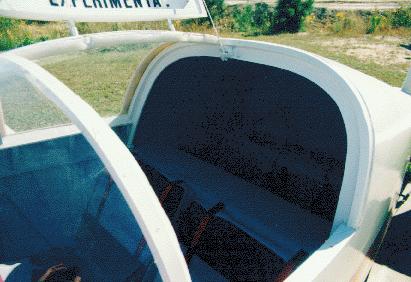
The canopy is a Dragonfly which has been sectioned similar to Bobby Muse's and Troy Petteway's planes. The center section is offset a few inches from the centerline to allow for more room for entry and exit. The canopy sits on a "false wall" about three inches tall to allow for lots of head room. The gasket was made by covering the door with Saran Wrap, applying lots of clear silicone to the frame, and closing the door. The mechanism which latches the canopy in the open position is a simple friction lock that Ken designed from a piece of left over 1" aluminum channel and a piece of steel rod.
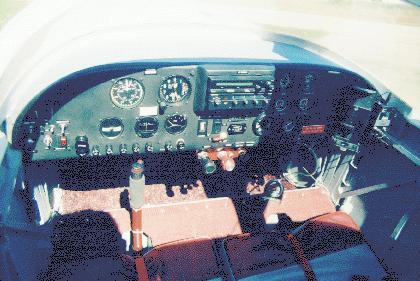
The instrument panel is fiberglass, and was made by laying up several layers of glass onto a piece of blue styrofoam. It looks like aluminum, but is much easier to cut and drill. The radio stack protrudes slightly to allow more room for the fuel tank. The dual stick controls are Ken's design. The right stick is easily removable in case the passenger doesn't feel comfortable with it. The seat is a nylon sling with upholstered cushions. There is plenty of leg room in this airplane.
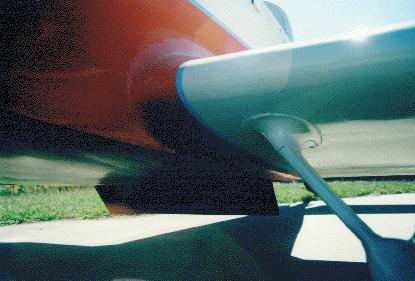
Diehl fixed gear mounts Cleveland brakes and wheels. A 6" x 36" .060" aluminum belly board speed brake is hinged from the aft spar and will deflect up to 40 degrees. This not only slows the plane down quickly for landing, but also pitches the nose down significantly for a better view of the runway.
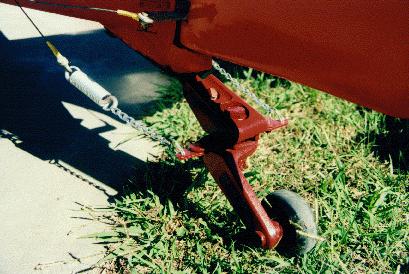
Tailwheel is a Matco unit purchased from Wicks Aircraft. Ken's installation uses the stock KR shopping cart wheel, however.Ken made his cowling by gluing foam planks together, sanding, glassing, then removing most of the foam and glassing the inside. A scoop on the bottom feeds air to the 6" x 2" x 24" radiator. Oil is checked through a home-brewed spring loaded door similar to those found on Wichita planes.

Having already built an Avid Flyer, Ken chose the KR2S because he wanted to do more cross-country flying, at a higher speed than the Avid Flyer was capable of. He also felt that the KR2S offered more opportunities for stretching the cockpit to better fit his build.
Cruise speed is only 125mph presently, due to carburetor problems, but will improve as soon as the RPMs come up. Ken reports that his KR2S is much less pitch sensitive than standard KR2s that he has flown, and feels that the S model solves the problem. Also, the heavier engine located further forward results in a CG envelope 2 inches forward of the stock location, which Ken feels contributes to its stability. Hands off flying is not a problem. So far, Ken has been using 85mph on final, deploys the belly brake which slows him to a 75mph glide, and a 65 mph touchdown. More experience with the plane will probably yield slower landing speeds. Stall speed is around 55mph.
If you'd like to have your project or KR2x featured her, email Mark Langford at langford@hiwaay.net
Return to theKR2S Construction Page






